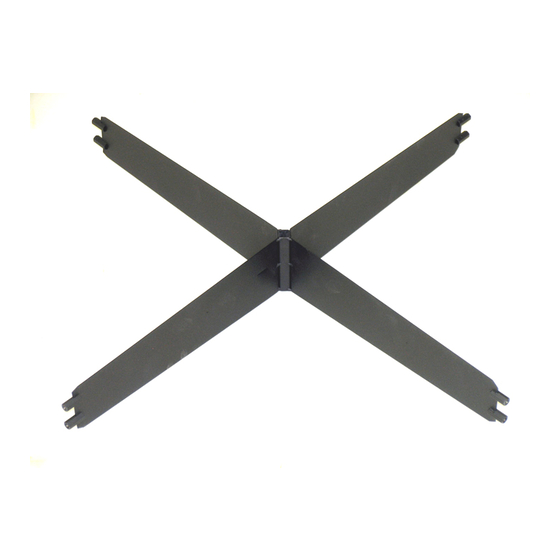
Advertisement
Table of Contents
AstroSystems
Spider and Secondary Mirror Support System
The Newtonian telescope secondary mirror must be mounted, positioned and adjusted properly for optimum
telescope performance. Follow these instructions carefully and you will avoid the common problems
encountered when installing the secondary mirror. Proper installation of the secondary will eliminate
astigmatism from a pinched mirror, severe coma and diffraction from poor collimation and loss of image
illumination from improper mechanical layout.
Spider
The spider mounting holes must be located accurately to minimize diffraction. To position the four
mounting holes, wrap a piece of paper that is at least 1 1/2 times the circumference of the tube around the
tube (adding machine paper works great) and make sure the edges line up squarely where they overlap.
Mark the paper on the bottom layer at the end of the top layer where the paper overlaps. This will be an
accurate measure of the circumference of the telescope tube.
The portion of the paper representing the tube circumference can now be folded in half and then half again.
Each of the folds and the end mark will give the hole positions at 90 degree increments around the tube.
Wrap the paper around the tube at the proper distance from the front end of the tube. Using a 13/64" drill
bit, drill the holes at the marks on the paper. The holes should be positioned relative to the focuser as in
Figure 1 and Figure 2 (over).
Installation
Always thread a screw in each vane end before installing to clear any obstruction of the threads. After
the dry fit, apply a tiny drop of oil to the end threads of each screw before installing into vane end.
This insures a consistent "feel" so each vane is tightened equally.
Install the spider, tensioning it so that moderate pressure at the center body won't deflect any of the vanes.
If the telescope tube doesn't retain its shape after tensioning (often experienced with cardboard or other non-
metallic materials), it may be necessary to reinforce the tube with several layers of epoxy/fiberglass inside or
wood or metal end rings at the tube ends. The following drawing shows the correct installation of the spider.
The spider should be 0.1-0.15" smaller than the tube inside diameter to allow enough tension. A thin vane
spider offers the best optical performance and relies on tension for rigidity and holding proper collimation of
the secondary. If the spider touches the
tube wall it is too large or the tube is
too flexible and should be corrected.
Adjustment
Stand back a few feet from the front of
the telescope and check that the
reflection of the spider vanes in the
primary are as narrow a line as possible. As you are looking in the front of the tube you can rotate the vane
ends to accomplish this. Slight vane deformations will usually be pulled straight when the mounting screws
are tensioned. If some should remain they are easily worked out with some judicious adjustment by hand
while the spider is under tension.
Secondary Holder
Advertisement
Table of Contents

Summary of Contents for AstroSystems Heavy Duty Spider
- Page 1 AstroSystems Spider and Secondary Mirror Support System The Newtonian telescope secondary mirror must be mounted, positioned and adjusted properly for optimum telescope performance. Follow these instructions carefully and you will avoid the common problems encountered when installing the secondary mirror. Proper installation of the secondary will eliminate astigmatism from a pinched mirror, severe coma and diffraction from poor collimation and loss of image illumination from improper mechanical layout.
- Page 2 ** The half-width (B) of these two spider/secondary holder combinations is using the “A” spider with the 1.5" center body. AstroSystems spiders have a half-width of 0.75" for spiders up to 11" and 1.25" for larger spiders. The table above reflects the most common size combinations used for visual telescopes. You may have to modify the above dimensions before drilling mount holes if you use a relatively large secondary, for say photography, or a small secondary as in a planetary or CCD scope.
- Page 3 AstroSystems, Inc. 124 N. Second St. LaSalle, Co. 80645 USA 970-284-9471 / 970-284-9473 fax www.astrosystems.biz...
Need help?
Do you have a question about the Heavy Duty Spider and is the answer not in the manual?
Questions and answers